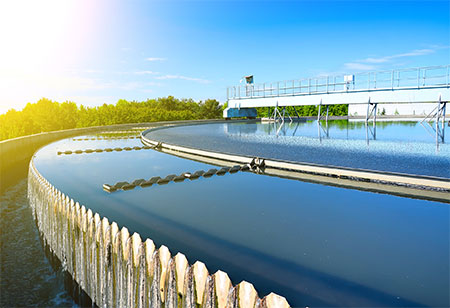
When it comes to industrial water treatment, scaling is a formidable ad- versary. This unwanted buildup of minerals can wreak havoc on equipment, reducing efficiency and increasing maintenance costs.
To tackle this issue effectively, it's vital to understand and implement the right antiscalant strategies. The strategies you're about to unravel not only prevent scale formation but also ensure the longevity and optimal per- formance of water treatment systems.
Understanding The Basics Of Water Scaling
Water scaling is a prevalent issue in industrial settings. It occurs when dissolved minerals like calcium and magnesium in water crystallize and deposit on surfaces. This phenomenon can create several challenges.
Primarily, these mineral deposits (or scales) adhere to the interiors of pipes, boilers, and heat exchangers, leading to reduced efficiency. They act as insulators, hindering heat transfer, a critical process in many industrial operations.
Additionally, these scales can constrict water flow, further impairing system performance and potentially causing significant damage. Your understanding of these basics not only helps in identifying scaling issues but also mitigates scaling in industrial water treatment systems.
Discovering The Role Of Antiscalants
Antiscalants play a vital role in maintaining system efficiency and extending the lifespan of equipment. These chemicals disrupt the scaling process by keeping mineral particles in suspension or altering their structure. This prevents them from adhering to surfaces.
Furthermore, consider the complex interactions between antiscalants and the minerals they target. Their effectiveness heavily depends on how they counteract the specific minerals in the water system.
For a deeper understanding, it'd be beneficial to explore learning materials like guides and industry publications regarding antiscalants. Such resources offer comprehensive information on the types, applications, and effectiveness of various antiscalant products.
Choosing The Right Antiscalant
When selecting the right antiscalant, it's imperative to consider several key factors. First, identify the specific type of scale you're combating. Common culprits include calcium carbonate and silica. Each type of scale responds differently to antiscalants, making this identification crucial.
Next, examine the composition of your water. Factors like pH levels, temperature, and the presence of certain ions can significantly influence the effectiveness of an antiscalant. It's not a one-size-fits-all situation—what works well in one system may be less effective in another.
Consulting with a water treatment specialist is often a wise step. They can analyze your water samples and provide tailored recommendations. Doing so ensures the antiscalant chosen will optimally protect your equipment and maintain system efficiency.
Remember, the right antiscalant can mean the difference between smooth operations and costly maintenance issues.
Applying Best Practices In Antiscalant Application
When it comes to managing industrial water treatment systems, the practical application of antiscalants is essential. Here are some best practices to ensure optimal performance:
1) Accurate Dosing: Ensure the antiscalant is dosed precisely according to the system's requirements. Over or under-dosing can lead to inefficiencies or scaling problems.
2) Consistent Monitoring: Regularly check the water chemistry. This helps adjust the antiscalant levels to match any changes in water quality or system operation.
3) Even Distribution: Antiscalants must be evenly distributed throughout your system. Uneven distribution can cause certain areas to be more prone to scaling.
4) System Compatibility: Ensure the chosen antiscalant is compatible with your system's materials and operating conditions. Incompatibility can lead to corrosion or other damaging effects.
5) Routine System Checks: Regularly inspect your water treatment equipment. This helps in the early detection of any scaling issues, allowing for timely adjustments in antiscalant usage.
With these practices, you'll maintain the efficiency of your water treatment system and prevent scale-related complications.
Monitoring And Maintenance: Key To Success
Routine monitoring and maintenance safeguard the integrity and efficiency of your entire system. Regular checks of water quality and antiscalant levels are essential. You're not merely observing figures on a chart; you're decoding the health of your operation.
Consider each inspection an opportunity to address scaling issues. This isn't merely a routine task; it's a strategic move to avert potential operational disruptions. Doing so enables you to engage in a proactive defense against costly breakdowns and ensure your system operates at its peak.
The success of your antiscalant strategy hinges on this continual vigilance. It's not just about the chemicals you use but how you monitor and address their impact attentively.
Environmental Considerations In Antiscalant Use
When it comes to protecting the environment, choosing eco-friendly options is a must. It's equally important to adhere to strict regulations regarding the use and disposal of these chemicals.
Responsible management ensures that the benefits of antiscalants in industrial water treatment do not come at the expense of the environment. When you prioritize sustainability, you contribute to the broader goal of environmental conservation while keeping your water treatment systems efficient.
Final Words
Effective antiscalant strategies are crucial for the efficient and sustainable operation of industrial water treatment systems. With these techniques, industry professionals like you will be able to reduce the challenges posed by water scaling significantly.
Remember, a proactive approach to scale management not only preserves equipment but also contributes to overall operational excellence.
We use cookies to ensure you get the best experience on our website. Read more...